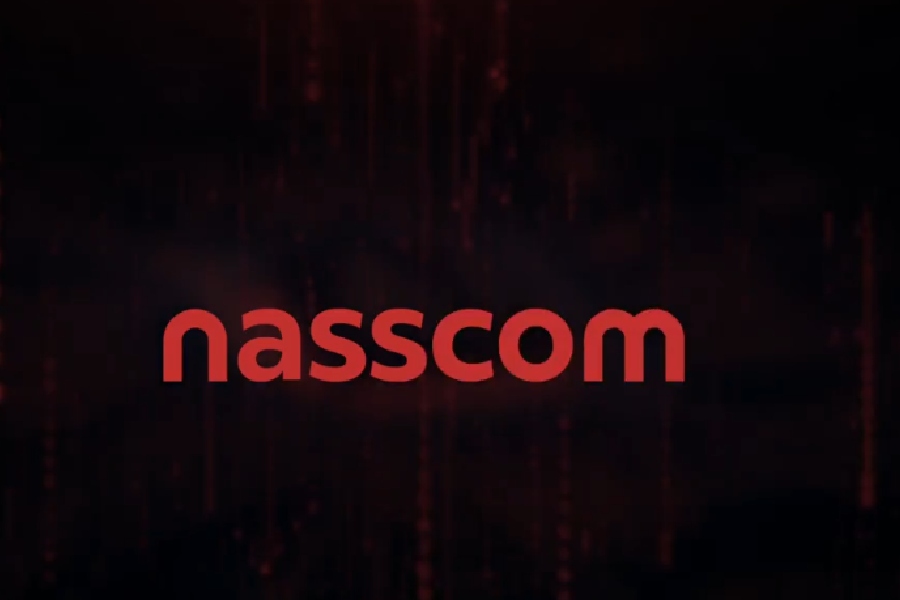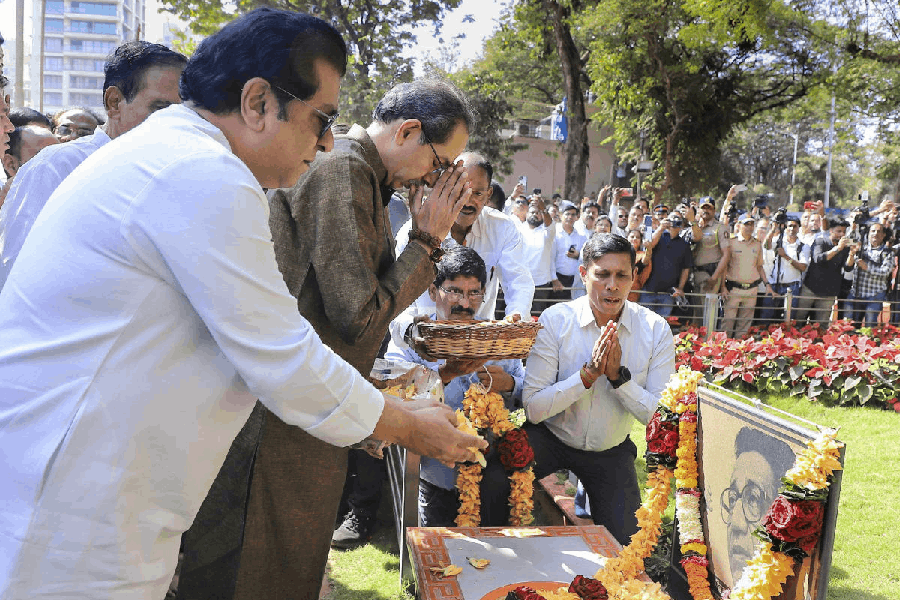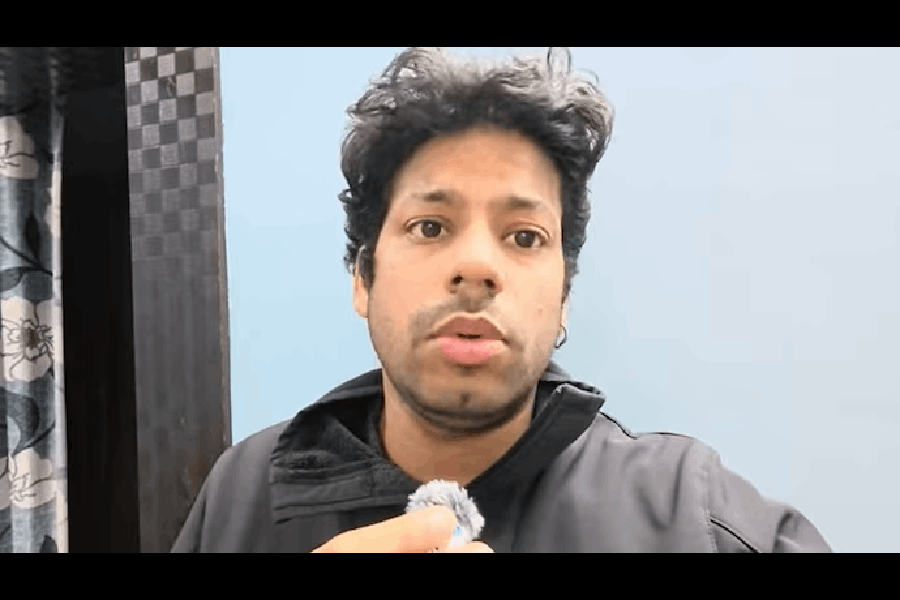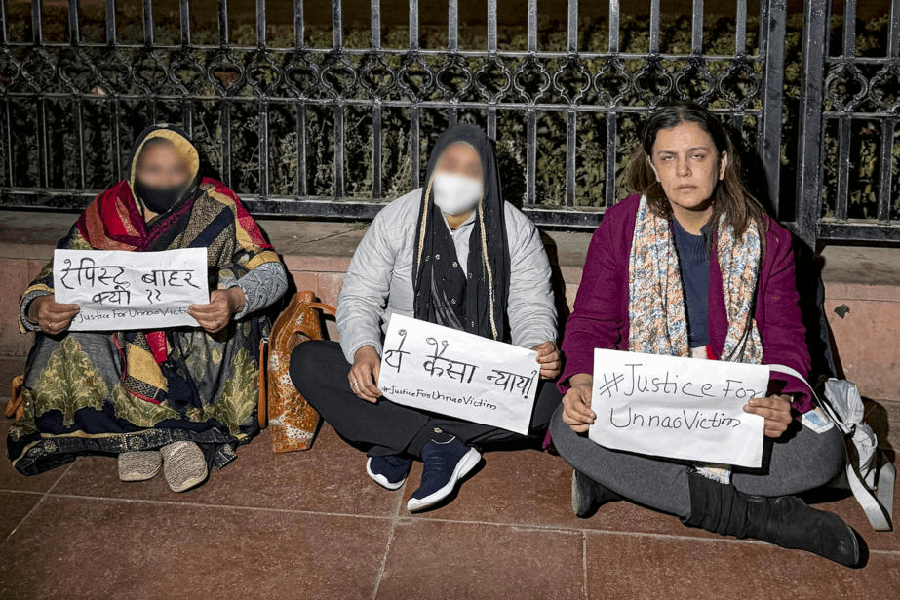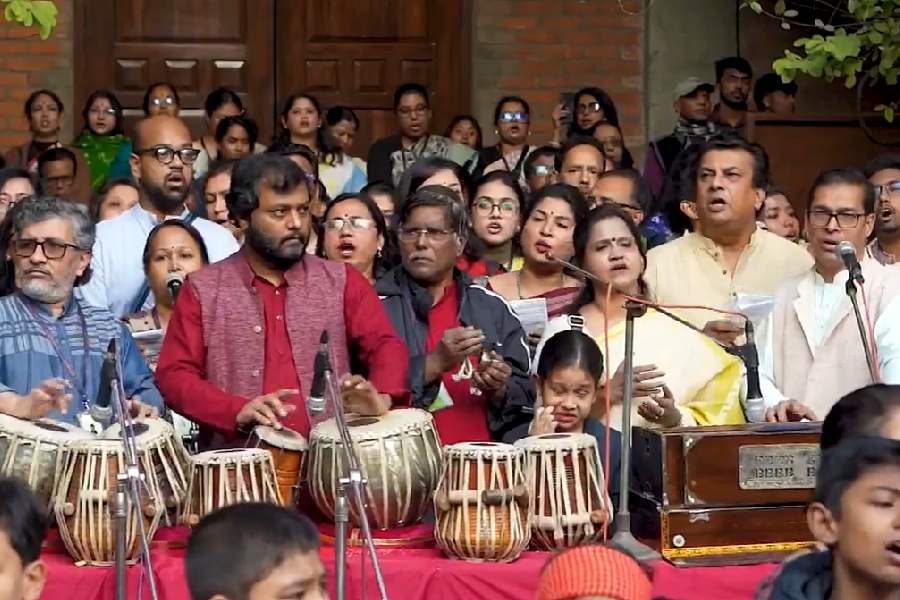 |
| Angus Denoon whips up his jhalmuri at a London street corner |
Trust you are refreshed after Durga Puja,’ was the opening line of Angus Denoon’s email to t2. Denoon is as Calcuttan as any of us, and some. The British chef is a regular sight on London’s street corners making and selling jhalmuri, the Calcutta street snack he first tasted and fell in love with close to a decade ago. A t2 chat with London’s Jhalmuriwallah, as he likes to call himself...
When did you first visit Calcutta?
It was in 2004, I think. I came on via a stopover from Australia on my way back to the UK. I stopped at Calcutta so I could go to the mountains. I went to BBD Bag to buy my ticket and saw the sprawling street food stands there. I was cautious and ate chapatti and sabji and thought what a friendly and relaxed city it was — very different from what I had imagined.
That night, I went to board my train from Sealdah and outside all the drummers were warming up for the night ahead, for it was the last night of Durga Puja. I had never heard of Durga Puja nor heard drummers like it. The spell had been cast.
When did you first taste the city’s jhalmuri and how would you describe that experience?
That first trip, I spent only one night in Calcutta, but the following year I returned on the same flight and this time I stayed. I have spent much of my life as a chef and since my first visit to India — Mysore in particular — I was taken with the street foodwallahs... not just the taste but the beauty of the hands and the theatre of the procedure... and had always thought of making a film on the subject.
The night before I left the UK on my trip that would end up in Calcutta, I had a dream that now is the time to make the film and throughout the trip, I had pointers that this is what I should do. So when I arrived in Calcutta, I had the intention to make a pilot for the proposed series of street food around the world, although at the time I had no camera or had never made a film before. I also had no idea that I was walking into one of the greatest cooking shows on earth.
So I spent a couple of weeks walking the streets and eating and watching and eating some more before heading to Nepal. It was there that I was told that a shop had the camera I had thought of buying. So I got it, returned to Calcutta, walked out on to the streets and pressed the red button.
I knew nothing about the food and knew no one, so I just watched a lot. One stall that had a place to sit was a jhalmuri stall in front of the old Dunlop Building on the corner of Mirza Ghalib Street and Royd Street near Park Street. The guy was very beautiful to watch as he swirled around his set-up mixing and chopping and roasting... like a dance, and at the end, he produced a bag of mystery to me that tasted wonderful. It was light and fresh but substantial in its effect. I was sold.
What made you decide to sell jhalmuri on the streets of London?
I liked the versatility of the dish, the fact that it was so portable and you did not need a kitchen to get it ready. I have spent many, many hours in hot airless kitchens where you never see daylight, sunlight or the moonlight. Also, it is accessible to most people, no matter what their diets or religious beliefs are.
What was the reaction when you walked out with your jhalmuri cart on the streets of London for the first time?
From the very first time I served it to people, I realised this dish was something special, as everyone from all different sections of society, of all different ages and homelands seemed to like it very much. Often when I cooked before and did food different to what people are used to, they were not favourable in their reaction, but the jhalmuri crossed all barriers... and that is very rare and very special.
When I started to serve Indian people, they were very very encouraging and supportive... even though at first I did not know what I was doing really. I learnt so much from them... as I still do now.
How would you describe your jhalmuri cart and how has it evolved over the years?
My van and cart continually evolve. They are always, though, made from bits of stuff that comes my way... from scrap yards, skips and all that. Like the way the muri I sell has evolved, things just seem to come and I just follow. I also sell ghugni chaat, phulchas, lassi, cha, dhokla and Gujarati dal.
How is your jhalmuri different from the one we get here?
When I first started, I kept it as authentic as possible to how I remembered it in Calcutta. But over time, it has evolved to meet the desires and wishes of the people over here. Now mine has less percentage of muri than in Calcutta and it has a tamarind sauce that I make with palm sugar. So, in a way, it is heading towards bhel. There is also more fresh stuff in there.... I like to put fresh ginger in there. When I am around Gujarati people, I do it like this and around the Bangladeshis like that.
What’s the best compliment you’ve got for your jhalmuri?
Once at an Indian mela in London, I had three Bengali grandmothers sing to me and my cart was surrounded by people... dancing and all happy! That was special.
Is there any street food in Calcutta that you don’t particularly fancy?
I can honestly say that on the streets of Caclutta, I have eaten some of the best food I have eaten anywhere — be it fancy Michelin-starred restaurants or five-star hotels. For weeks I have eaten pretty much exclusively from the street food stalls and I cannot think of anything I have not enjoyed. The standard is remarkable and there is much the western world could learn about how to feed a lot of people with tasty, fresh and nutritious food from how things are done in your city.
Where does The Everybody Lovelove Jhal Muri Express go from here? To start it was sticky because people did not know what I was doing and the English can be quite shy until they have a drink. Also, I was not really sure of what I was doing and therefore not that confident and that in itself does not attract people. But over the years, my confidence grew and more people tasted it and once they taste, they always return and tell others.
I would like to see more jhalmuriwallahs in the UK. We have a very big problem in the West with obesity and much of this is caused by people eating mass-produced snacks. Jhalmuri has a magic from how it is made to how it tastes... and we all need a little magic.
quick five
best jhalmuri in calcutta
The guy outside the Tata building (Centre) opposite the Maidan
Would love to whip up jhalmuri for
Professor (Muhammad) Yunus, founder of the Grameen Bank
biggest fan of his jhalmuri
i had a dog called Robbie and he loved it!
one ingredient his jhalmuri can’t do without
Well, a Bengali would say mustard oil, but I have done versions with this and that and not this and that and as long as you have the muri anything is possible. I am looking at taking the principles of jhalmuri and using only British ingredients — spelt (hulled wheat) for muri, rhubarb for tamarind, apples, radishes, carrot seeds and flaxseed oil
best non-calcutta street food
i have spent a few days in Mumbai and I did like the papad chaats they had on Juhu beach. Also outside the palace in Mysore, I had some cucumber chaat, I have never seen elsewhere. The chaat carts of Goa were wonderful with their versions of sev puri and paani puri. But for variety, quality and price, Calcutta is in a league of its own
Priyanka Roy


